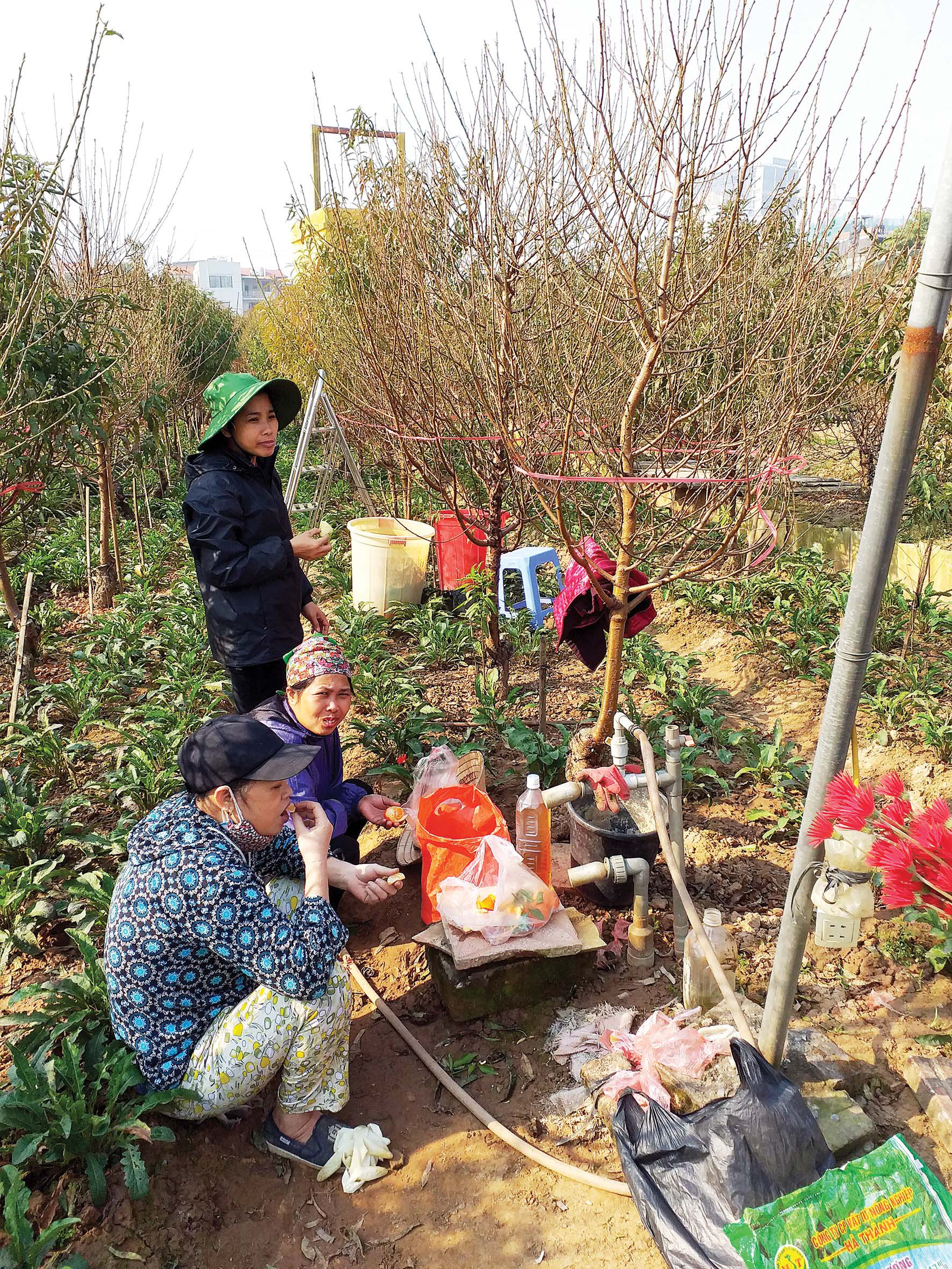Each year, as time leading up to Vietnam’s Lunar New Year (Tet) holiday begins to dwindle, farmers in Hanoi’s flower village hustle to put the finishing touches on their harvest of traditional flowers and ornamental plants – two staples of the country’s most important annual celebration.
While most farmers in northern Vietnam use the end of the year as a downtime between harvest seasons, flower farmers use the weeks before Tet to gear up for their busiest season, with many in such a rush that a short time away from their gardens, even for a quick meal, is completely out of the question.
Leaf-plucking season
Though the Nhat Tan flower village in Hanoi’s Tay Ho District is traditionally known for the peach trees it grows to supply Vietnam’s northern region for Tet, which is due in late January, many other suburban areas have begun cultivating the holiday staple in order to help meet local demands, including Uy No and Tien Duong Villages in Dong Anh District, Van Tao and Dao Xa Villages in Thuong Tin District, Dong La Village in Hoai Duc District, and La Ca Village in Ha Dong District.
For farmers in each of these villages, the high season is in full swing as the sound of leaves being plucked from peach-blossom trees to make room for fresh flower buds can be heard across the area.
But while some of these peach trees are already beginning to bloom, thousands of others are still awaiting care from their farmers.
Tran Van Tuan, a farmer in La Ca Village who planted 320 peach trees this season, explained that the entire crop must be plucked in just 2-3 days if all the trees are to bloom simultaneously.
Working against time, he and his family have been plucking from dusk till dawn to meet that 72-hour deadline.
“We are so busy during plucking seasons that my entire family has to buy boxed lunches and eat them in the fields,” Tuan said, adding that the adults are so busy preparing the harvest that “[their] children also have to take care of themselves after returning home from school.”
|
|
| Farmers in the Nhat Tan flower village eat lunch in the fields while preparing for Tet holiday. Photo: Viet Hung / Tuoi Tre |
Le Thi Hanh, a farmer in Nhat Tan Village, has cultivated 150 peach blossom trees this year.
According to Hanh, this year’s plucking season started about a week later than usual due to unusually warm weather.
Most families split the leaf-plucking process into two phases, each taking place 5-7 days apart in order to mitigate losses should the crop fail.
“Farmers who plant peach blossoms to sell during Tet are betting their livelihoods because if the trees blossom too early or too late they can’t be sold for a reasonable price,” Hanh said.
“They really only make a good income when the flowers bloom at just the right time.”
Bending branches
Equally busy are the kumquat tree farmers of Tu Lien and Quang Ba Villages in Tay Ho District. But to prepare for Tet, these farmers are not plucking flowers.
Instead, their task is a bit more arduous: tree bending.
According to kumquat tree farmer Nguyen Tuan Ha, the trees must go through a meticulous and elaborate bending process in order to sell for a decent price during the holiday season.
But tree bending is no easy task and even the best farmers can only produce a few trees each day.
“My family eats meals in the fields each day during the lead-up to Tet because otherwise, we won’t be able to bend the trees in time for Tet,” Ha said.
Le Thi Tham, whose kumquat tree crop this year numbers 250, works with her husband and two children to shape the trees.
"Planting kumquats is very strenuous year-round [because] they take so much effort to cultivate and water, but the most difficult period is toward the end of the year when the bending season arrives," Tham said.
Aside from traditional kumquat trees, bonsai kumquat trees are also a popular Lunar New Year staple.
Farmers in Tu Lien, a village known for its bonsai kumquat trees, spend the final weeks before Tet uprooting their crop and transferring each tree into pots and jars.
Hoang Van Kinh, a Tu Lien resident who specializes in planting kumquat bonsai trees, shared that these trees do not take much time to prepare because most customers prefer them in their natural state.
“The busiest time for my family is toward the year-end when we are busy uprooting the trees and transferring them into pots,” Kinh said.
“Afterward, they need to be cared for and watered so they can stay healthy.
"We also spend a great deal of time growing grass around the base of each tree and filling the pots with gravel."
Like us on Facebook or follow us on Twitter to get the latest news about Vietnam!




















































